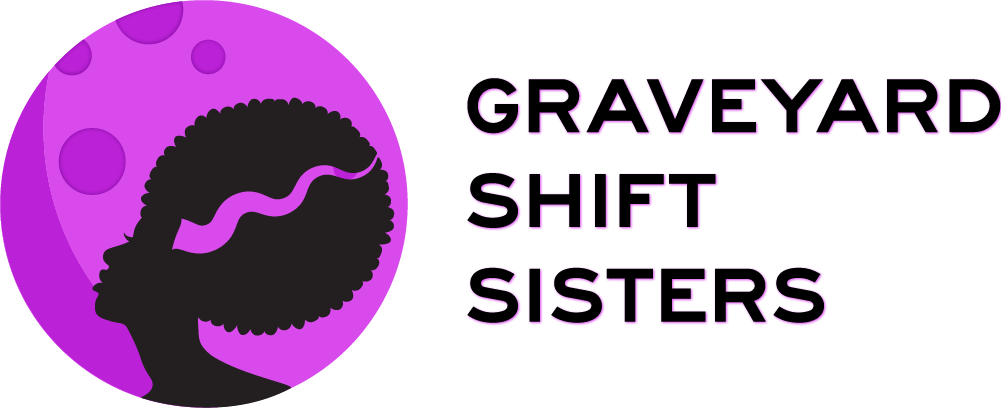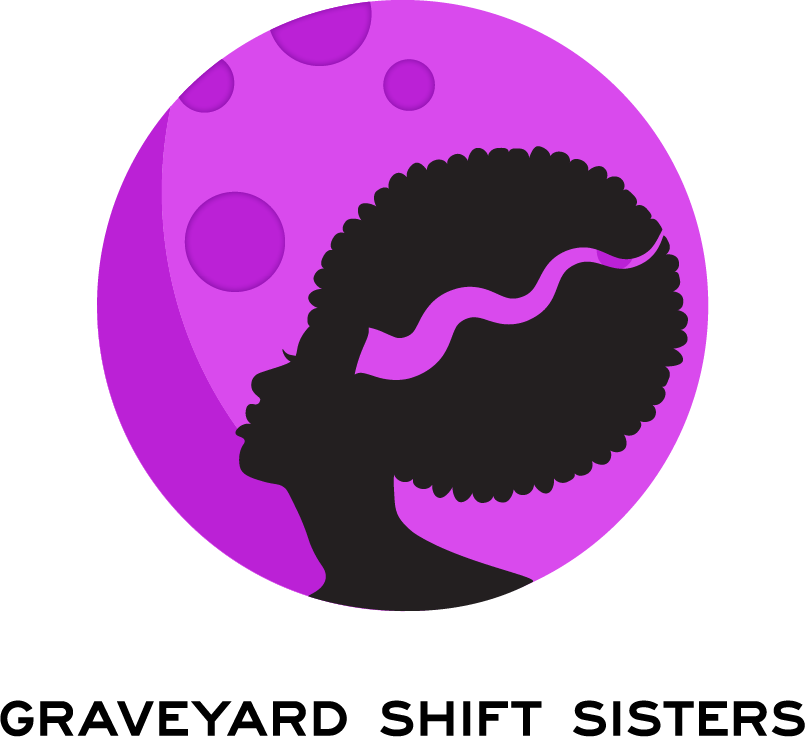Searching For A Decolonized Horror: Interview With NeverDeadNative Creators Dani & Talon
"Horror cinema elicits a physical and psychological response by forcing the subconscious fears of the audience to the surface. This is why the genre can be such an effective vehicle for uncensored Indigenous expression, pushback and resistance. Horror cinema liberates us as indigenous filmmakers by allowing us to not hold back on or censor our gruesome symbolism, our unflinchingly unpleasant allegorical representation of the abhorrent, repugnant, violent abomination that is colonization."
-Ariel Smith, filmmaker/artist/author of "This Essay Was Not Built On an Ancient Indian Burial Ground"
While horror narratives have played with speculative ideas that surround Native/Indigenous themes, they are commonly buried (pun intended) in white saviorship, superficial exposition, and erasure. The "Indian burial ground" trope doesn't allow nuance and the voices of the Indigenous person to prosper. This is commonly noted in Indigenous critical film theory when it comes to the horror and sci-fi genres. Many who are Indigenous horror fans, filmmakers and scholars in this area alike contend that there is a space they need and should occupy in horror as well as a history to draw from to tell stories within the genre
Next to nerding out on Tales From The Crypt and waxing refreshingly about the irony of Hollywood's invasion narrative, Dani and Talon are the duo behind Never Dead Native, "an inclusive space for Native and Indigenous people to celebrate their passion of horror." Never Dead Native covers film, television, video games, anime, music, and literature in a "fun and introspective" way that spotlights Indigenous themes, representation, and perspectives from those who are Native peoples. Their emphasis on discourse and the need for more native genre stories is eye opening because the realization springs that under-representation is a serious issue.
How would you like to see Never Dead Native (NDN) evolve over time?
Dani: To see it grow beyond simply being a platform addressing issues, (such as lack of representation) but to foster an atmosphere of dialogue. For viewers and creators, there needs to be spaces of understanding and I hope this platform can help be a buffer for that. We decided to create this platform to have fun, and we want others to share that with us too. So I also hope to provide more creative ways of embracing love for horror and Halloween as Natives without preconceived stipulations.
Talon: My main desire and aspiration for NDN is to be able to really connect with people and celebrate. I love horror, and I definitely love sharing things that I’m passionate about with other people who think on a similar level (much like how I met #NeverDeadDani in the first place). Ultimately, I would love to see submissions grow, and I would love to see written/image/story contributions be submitted more frequently to the platform. I’ve been so anxious to hear scary stories from both my home and others, whether they be old or new. No matter what the outcome, however, I really cherish my friendship with #NeverDeadDani and the outcome of the passion in horror that we each shared. Though, whether the platform gets 1,000 hits or zero, it’s out there genuinely, and I’m content with that.
Dani, you've mentioned that one of the aspects of horror you enjoy is its empowering ability to 'challenge reality.' What are some of the genre's best examples of this?
In the ways I personally relate to the idea of challenging reality, the best example of a subgenre of that within horror, is fantasy. Some of my favorite films like Donnie Darko, Pan’s Labyrinth, Mirror Mask, have a way of juxtaposing the character’s surreal and whimsical experiences to their everyday life. While the mythical obstacles they experience may seem literal to the plot of the film, they offer deeper metaphorical meanings to character’s struggles that a viewer can relate to. When the character finds ways to cope or overcome those obstacles, that can be empowering.
Another sub-genre of horror that uniquely challenges reality is psychological thrillers. From classics like Psycho, Rosemary’s Baby, The Shining, The Sixth Sense, to more modern films like 1408 and Shutter Island. They all have different ways of playing on more personal phobias like fear of isolation; Or that feeling that something is watching you. While not everyone believes in the paranormal, many can relate to having these feelings at some point, even if they are considered silly in retrospect.
Also in both fantasy and psychological thrillers, you can pick out the cinematic elements that contribute to manipulation of what we deem to be reality. Whether the music and sound effects that build up the sense of dread in the viewer, or the supernatural beings that confront the characters in the film, they’re all artistic expressions of things we might relate to our own experiences. Artistic expression from the standpoint of a creator and a viewer can be a great break from everyday reality.
Talon, what are some of your "inner most fears" exposed by some of the horror films you love and shared amongst friends and family that have been unique to your identity and experiences?
I remember hearing about various “bad” spirits growing up on the rez. You had your good spirits, and your bad ones; like people. You always had protocol when it came to respecting the dead and their energies. Now, to be honest, I’ve literally typed and deleted three stories concerning this. Due to confidentiality (these stories are true, dealing with spirits and interaction with the living) I don’t want to even vaguely say them publicly like this in fear of bringing something bad. [Laughs] All I can really say is, hearing some of the stories my family told me growing up (not just as scary stories, but as lessons) really taught me that spirits are not things to play around with at all! So with that, any time I see “spiritual justice” in a horror film (like the Japanese film “Dead Waves” i.e.) I get so into it because I really do believe in it. Those films always get me going.
What have been some of the most problematic depictions of Indigenous people in horror and in what ways?
Dani: Prominent roles for an Indigenous person in film is rare and especially without some anti Indigenous trope involved. Some examples of these tropes include: The Indigenous “Shaman”, the ancient burial ground trope, the demonization of Indigenous practices/spirituality through the conflation of devil worship or “voodoo” tropes, the depictions of Indigenous peoples as primitive ghosts that haunt people, or outright depictions of Indigenous peoples as violent cannibals.
While these tropes are still very pervasive and all harmful in their own ways, the two most recent film examples of the most outright offensive depictions are “Green Inferno” and “The Darkness”. Both films have plots that inherently undermine Indigenous people’s humanity. What is even more disturbing about that is that those depictions undermine the ongoing struggles that modern Indigenous peoples currently face, (like desecration of sacred sites and environmental violence).
Talon: I think there’s a huge issue with the limitation that large media puts on Indigenous characters in this realm. For the most part, Indigeneity fulfills a role that “explains the spiritual” and is a “wise warning to not - blah blah blah”. I know this seems weird coming off of my previous answer, but there is so much more about our diverse cultures to explore. Much like how any other minority can be stereotyped into serving a basic one-dimensional purpose in horror, so too do I think that Indigenous peoples (being as there are so many different cultures, beliefs, religions, ideologies, stories, etc.) don’t really get the opportunity to show how vast OUR horror stories and aspects can really be.
What are some of the stories unique to certain Indigenous cultures that you think would make interesting genre narratives?
Talon: Thinking back to the HBO-version of the “Tales from the Crypt” series, one finds episodes of “horrific” justice (much like in the originating comics), where the perpetrator finds their punishment in the fantastical-terrorizing elements of the show. I think that growing up, much of the stories I heard from my Dakota/Lakota families had a different kind of version to this idea too, it’s just that they didn’t need such gore and visual aversion to scare you. Often, there would be small, vague anecdotes of the supernatural that left you guessing and filling in some parts of the stories yourself.
Dani: The possibilities for this are endless! I don’t exactly want to name too many specifics as I believe there needs to be a process of consent involved with the actual communities where those symbols and stories originate. But I would love to see oral traditions incorporated into narratives. Mythical concepts reconceptualized from an Indigenous lens. Just to expand on that idea, I'll give an example; mermaids. We know the cleaned-up Disney version of them, but how would they differ for Caribbean cultures? Or for the Mdewakanton Lakota/Dakota, the Ho-chunk or the Anishinabek?
Another cool narrative would be a story related to magic, that isn’t demonizing or appropriative. Indigenous stories are so rich with creepy stories that could contribute to excellent film narratives if they were executed mindfully. Even just more modern day depictions simply casting an Indigenous person in a primary character role without pressures to be performative to expectations for cultural identity, would be a fresh narrative.
Who are some of your favorite Indigenous filmmakers that utilize the horror genre in order to tell culturally relevant stories?
Dani: To be honest it’s really hard to say! I haven’t seen enough films in their entirety to really pick favorites. I think I will wait until I have reached the saturation point to begin to draw conclusions. But if you want to follow along you can always check back in with Never Dead where we will discuss Indigenous film.
Talon: In all honesty, and this is not to cop out, my knowledge on that is still growing, and I don’t really want to publicly favor one over the other. All I can really say is, if it clicks with us, we’ll review it/share it/etc.! Part of our platform too is to not force anything. Just as we won’t force ourselves into certain things, we hope that whatever content we do talk about are things that genuinely caught our eyes and made us think enough to write a piece or record a podcast. That’s not to say we’ve seen it all either, though. Part of what this platform has done for me personally, I think, is open my mind up to sitting down and viewing more content for the future. For example, for our M. Night Shyamalan rant podcast episode, I went and (reluctantly) watched “The Visit” (#NeverDeadDani made me kinda [laughs]), just so I can be sure to not base the entirety of my opinion off of simple dismissal and not actually giving things a chance. I think this can work in both ways, and thus I cannot wait to see what comes in the following months.
Follow Never Dead Native on Twitter & Tumblr Listen: Never Dead Radio
Submit your work to Never Dead Native here.
#NeverDeadDani | Twitter
#NeverDeadTalon | Twitter
More Resources:
"This Essay Was Not Built On an Ancient Indian Burial Ground: Horror Aesthetics within Indigenous cinema as pushback against colonial violence" by Ariel Smith
"Twisting Conventions: A Feminist Indigenous Perspective on the Horror Genre" by Vanessa Dion Fletcher
Image: Woman pointing to the universe By Javier Pardina

